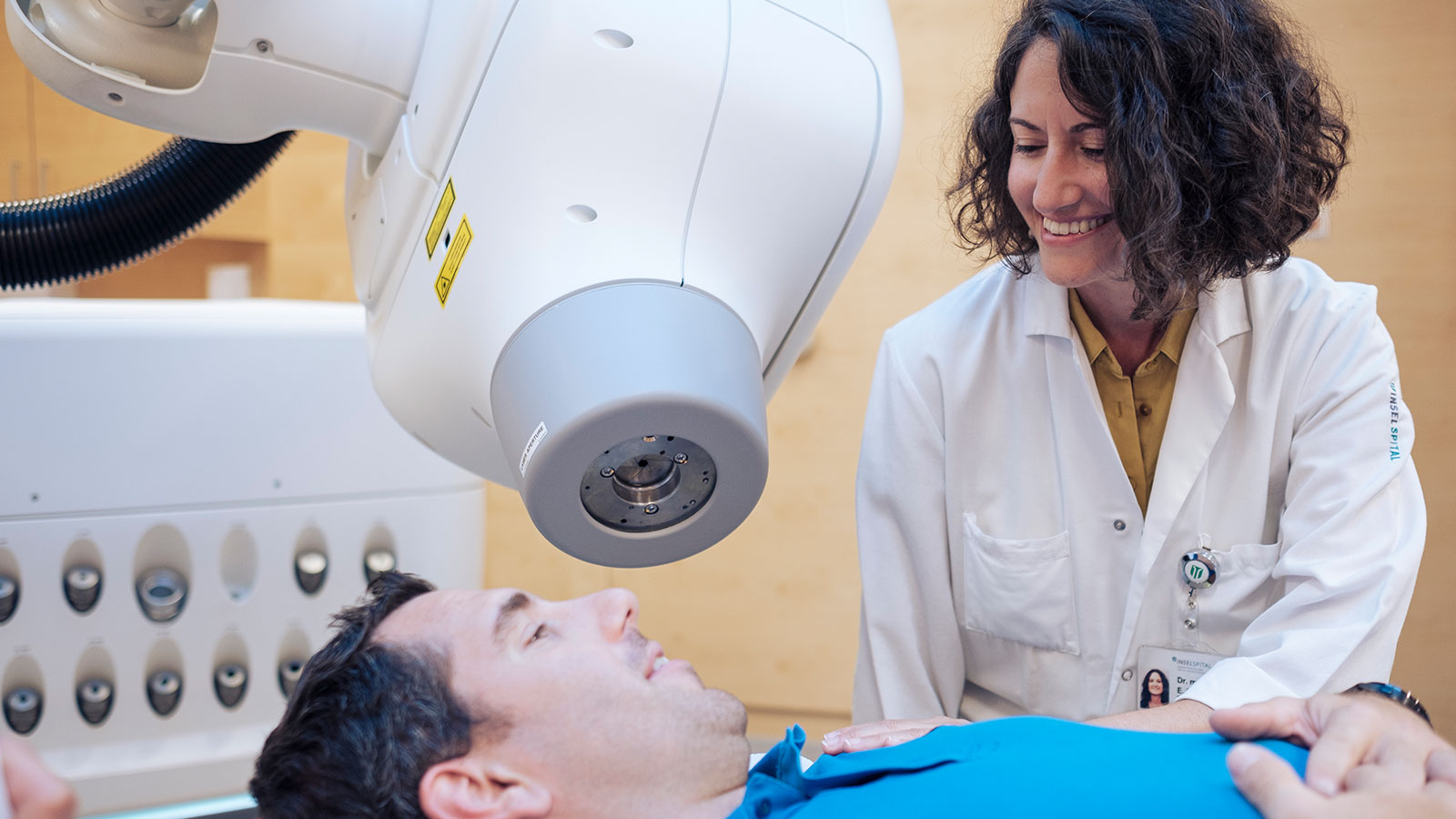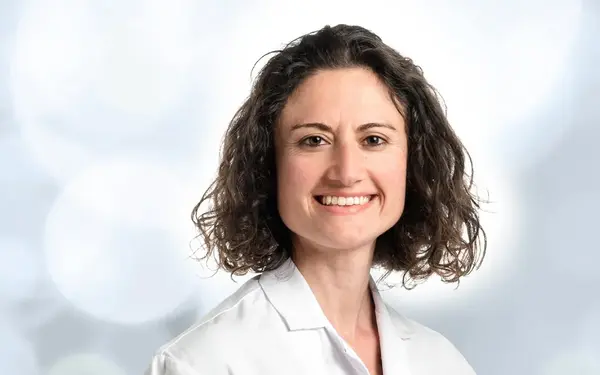June 8, 2025, is World Brain Tumor Day—an occasion to raise awareness of the challenges and advances in the treatment of brain tumors. As a radiation oncologist specializing in neuro-oncology, I would like to give you an insight into my everyday work and how we fight for our patients as a team.
My everyday work as a radiation oncologist
My working week begins with the interdisciplinary tumor board. This is a central part of our daily work. Together with colleagues from neurosurgery, neuroradiology, medical oncology, nuclear medicine, and pathology, we discuss each individual case in detail. We analyze imaging, tissue samples, and molecular markers to develop a customized treatment plan.
Brain tumors are complex diseases. Only through close cooperation between all specialist disciplines can we ensure precise and optimal treatment. As a radiation oncologist, I am responsible for planning and administering radiation therapy. This is a highly precise, individually tailored process. It is by no means simply a matter of «pressing a button».
First, I carefully evaluate the MRI and CT images of the patients. I mark the tumor with millimeter precision and identify sensitive structures in the immediate vicinity, such as healthy brain tissue, the optic nerves, or the brain stem. I then use special planning software to create a customized radiation treatment plan. The aim is to target the tumor as effectively as possible while sparing the surrounding healthy tissue as much as possible.
What distinguishes me from an oncologist or radiologist?
Unlike medical oncologists, who specialize in drug therapies such as chemotherapy or immunotherapy, I work in radiation oncology with high-precision radiation.
My work also differs significantly from radiology: while radiologists are primarily responsible for diagnostic imaging, I am involved in treatment. Nevertheless, we work closely together. Radiology in particular provides us with crucial information about the location, size, and development of the tumor. Without their detailed image data and diagnostic expertise, targeted and gentle radiation therapy would not be possible.
Collaboration is everything
The treatment of a brain tumor is always teamwork – and at the highest professional level. For example, after surgery performed by our colleagues in neurosurgery, the pathology department provides us with precise information about the type and characteristics of the tumor. In neuroradiology and nuclear medicine, complementary imaging techniques are used to help us define the target area for radiation therapy even more precisely. Together with medical oncology, we also discuss possible combinations with medications, such as accompanying chemotherapy or immunotherapy.
Each specialty contributes its specific expertise, because only by working together can we ensure comprehensive and effective treatment.
What is important to me
In addition to medical precision, people are always at the center of my work. I often encounter patients who are uncertain or anxious about radiation therapy, usually due to a lack of information or misinformation. This makes it all the more important to provide clear, transparent information in a personal consultation. That's why I take the time to explain what will happen in a way that is easy to understand and accompany those affected throughout the entire treatment. Every person and every tumor is different – that's what makes our work so challenging and so fulfilling at the same time.
On World Brain Tumor Day 2025, I would like to encourage all those affected: therapy has made great strides in recent years. With modern technology, intensive research, and a strong team at your side, we are now better prepared than ever to walk this path together.
Ekin Ermis, MD
Ekin Ermis is a radiation oncologist specializing in neuro-oncology and an attending physician at the Department of Radiation Oncology at Inselspital, Bern University Hospital. She is active in both clinical and scientific work. In her research, Ekin Ermis develops AI-supported methods for automating radiation therapy planning. The aim is to make the treatment of patients with brain tumors more efficient and to ensure consistently high treatment quality.
Related News
- World Brain Tumor Day 2024 – Brain tumor diagnosis in children08.06.24 - On World Brain Tumor Day 2024, we are focusing on brain tumors in children. From diagnosis onward, the entire family faces an extremely stressful…
- World Brain Tumor Day 2023 – We give time, we listen08.06.23 - Support services such as pastoral care and psycho-oncology are extremely valuable for brain tumor patients. We will be presenting them on World Brain…
- World Brain Tumor Day 2022 – Hand in Hand08.06.22 - High-quality, patient-oriented brain tumor therapy requires many specialists. Our team will be introducing itself on World Brain Tumor Day on June 8.
- World Brain Tumor Day 2021 – the important work of nursing experts08.06.21 - On this year's World Brain Tumor Day on June 8, we would like to highlight the immensely important work of our nursing specialists.
Related Links
- June 8 is World Brain Tumor DayThis global day of action and remembrance aims to draw attention to the difficult situation faced by those affected and their families and to send a joint message.
- UCI – the Bern Tumor CenterThe University Comprehensive Cancer Center Inselspital (UCI) coordinates and integrates the services provided by the Inselspital in cancer research, diagnosis, treatment, and aftercare.
- Department of Radiation OncologyWebsite of the clinic
- Department of NeurosurgeryOverview page: Brain tumors




